Description
HRD3702 Assignment 2 Semester 1 Memo | Due 24 April 2025. All questions fully answered. HRD Strategies at Zenith Manufacturing Ltd
Zenith Manufacturing Ltd, a leading producer of industrial machinery in South Africa, faced an
increasingly competitive global market. Despite solid product innovation, the company struggled with
workforce inefficiencies, outdated skills, and high turnover. A recent internal audit highlighted gaps in
their human resource management (HRM) and human resource development (HRD) strategies,
indicating a misalignment between HR initiatives and organisational goals. Senior leadership
recognised that to maintain their market position and drive future growth, they needed to develop
integrated HRM and HRD strategies focused on performance, capability development, and fostering a
learning culture.
Zenith embarked on designing an HRD framework aligned with their strategic HRM objectives. They
developed comprehensive HRD strategies to enhance workforce competencies through structured
learning paths, leadership development programmes, and succession planning. New policies formalise
continuous learning, including mandatory annual training hours, tuition assistance programmes, and
professional certification sponsorships. Systems, such as a learning management system (LMS), were
implemented to administer, monitor, and evaluate training programmes efficiently. These policies
provided clear guidelines for employee participation, eligibility for development programs, and
standardised performance assessments tied to learning outcomes.
Zenith’s long-term vision was to evolve into a learning organisation characterised by lifelong learning
and continuous organisational renewal. They adopted Peter Senge’s (1990) five disciplines framework,
promoting systems thinking, personal mastery, mental models, shared vision, and team learning.
Cross-functional teams were formed to encourage collaborative problem-solving and knowledge
sharing. Regular knowledge exchange workshops, job rotations, and innovation forums helped build a
culture where learning was ingrained into daily operations. Employees were encouraged to pursue
self-directed learning, which was supported by a personal learning portal. This shift enables
individuals to take ownership of their professional growth while contributing to organisational agility.
The company’s human resource development division was restructured to improve the management
and administration of training operations. A training and development (T&D) team was established,
responsible for performing a training needs analysis (TNA), designing competency-based training
programmes and measuring training effectiveness using the Kirkpatrick Four-Level Evaluation Model.
The training delivery methods were diversified, combining classroom instruction, elearning modules,
and on-the-job training (OJT). A robust feedback mechanism was implemented to continuously
improve the quality of training. Additionally, T&D administrators coordinated with external providers
for niche technical skills and leadership courses, ensuring that the programmes met industry standards
and strategic objectives.
A crucial component of Zenith’s HRD strategy was the development of managerial capabilities.
Middle-and senior- level managers underwent comprehensive leadership development programmes
focused on coaching, performance management, emotional intelligence, and change leadership.
Managers were trained to identify team training needs, mentor subordinates, and lead
knowledge-sharing initiatives. HR Business Partners (HRBPs) collaborated with line managers to
integrate learning goals into departmental key performance indicators (KPIs). Through management
development centres and 360-degree feedback tools, managers received individualised development
plans, which allowed them to model learning behaviours and drive effective team development.
An analysis was conducted to evaluate the effectiveness of Zenith’s HRD strategy. The results yielded
a strong executive commitment to learning and development, well-defined HRD policies and
procedures, investment in modern training technologies, and a culture of continuous improvement.
There was also resistance to change among some managers, limited internal HRD expertise requiring
reliance on external consultants, and balancing production demands with learning schedules.
Zenith Manufacturing recognised that there is a need for technological advancements in manufacturing
(e.g. the fourth industrial revolution (4IR), which requires upskilling, expanding into new markets with
diverse workforce capabilities, and partnerships with universities and research institutes for
cuttingedge learning programmes. However, Zenith realised that there was increasing competition for
skilled talent, economic downturns affecting training budgets, and the risk of trained employees being
headhunted by competitors.
Zenith Manufacturing’s holistic approach to HRD transformed the organisation into a learning-focused
enterprise. By developing structured strategies, robust systems, and comprehensive policies, they
fostered a culture of lifelong learning and continuous organisational renewal. Investing in managerial
development and modern training administration enabled Zenith to enhance workforce performance,
adapt to industry changes, and secure its competitive advantage in the global market.
Question 1
1. Conduct a SWOT analysis of Zenith Manufacturing by identifying its key strengths (3 marks),
weaknesses (3 marks), opportunities (3 marks), and threats (3 marks). Base your answer on the
information from the case study.
Question 2
2.1. Critically evaluate the key HRM and HRD challenges faced by Zenith Manufacturing Ltd.
Support your answer with suitable examples from the case study.
2.2. In your opinion, were the HRD initiatives implemented suitable to address the challenges
and align HRM and HRD initiatives with organisational strategy? Support your answer with
suitable examples from the case study.
Question 3
3.Learning organisations play a critical role in the current and future development of staff.
3.1. Indicate what criteria you will use to determine if Zenith Manufacturing has embraced the
concept of learning organisations.
3.2. Explain how Zenith Manufacturing transitioned from traditional HRD practices to a
learning organisation . Additionally, evaluate the role of lifelong learning and organisational
renewal in sustaining its competitive advantage. Support your answer with suitable examples
from the case study.
Question 4
4.1. Identify the approaches Zenith Manufacturing implemented to develop its managers and
enhance their HRD capabilities. Support your answer with suitable information or examples
from the case study.
4.2. Analyse the impact of managerial development on the effectiveness of the company’s overall
HRD strategy.
Question 5
5.1. Explain by using an example what systems, policies, and procedures Zenith Manufacturing
implemented to contribute to the efficiency of the T&D administration. Give an example of what
was changed.
5.2. Explain how these initiatives contributed to enhanced training outcomes and overall
organisational performance.








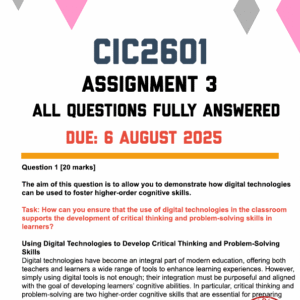

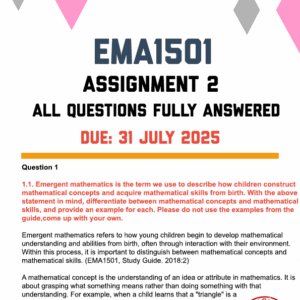


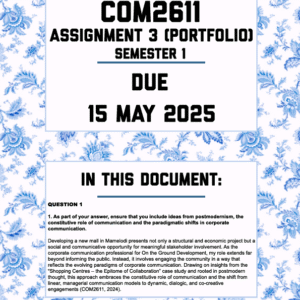



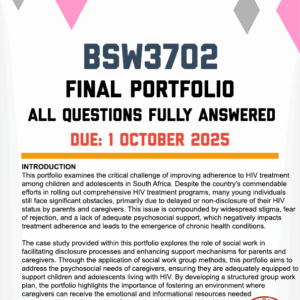





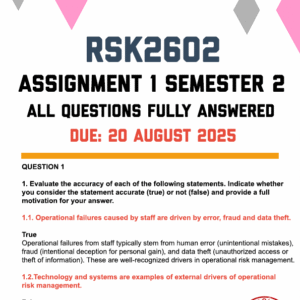



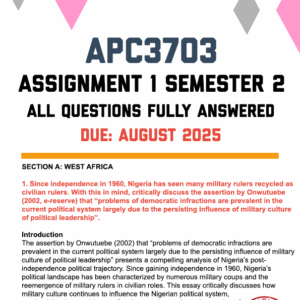





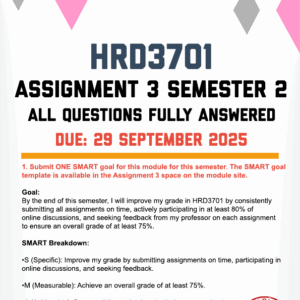
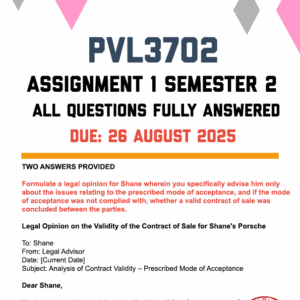

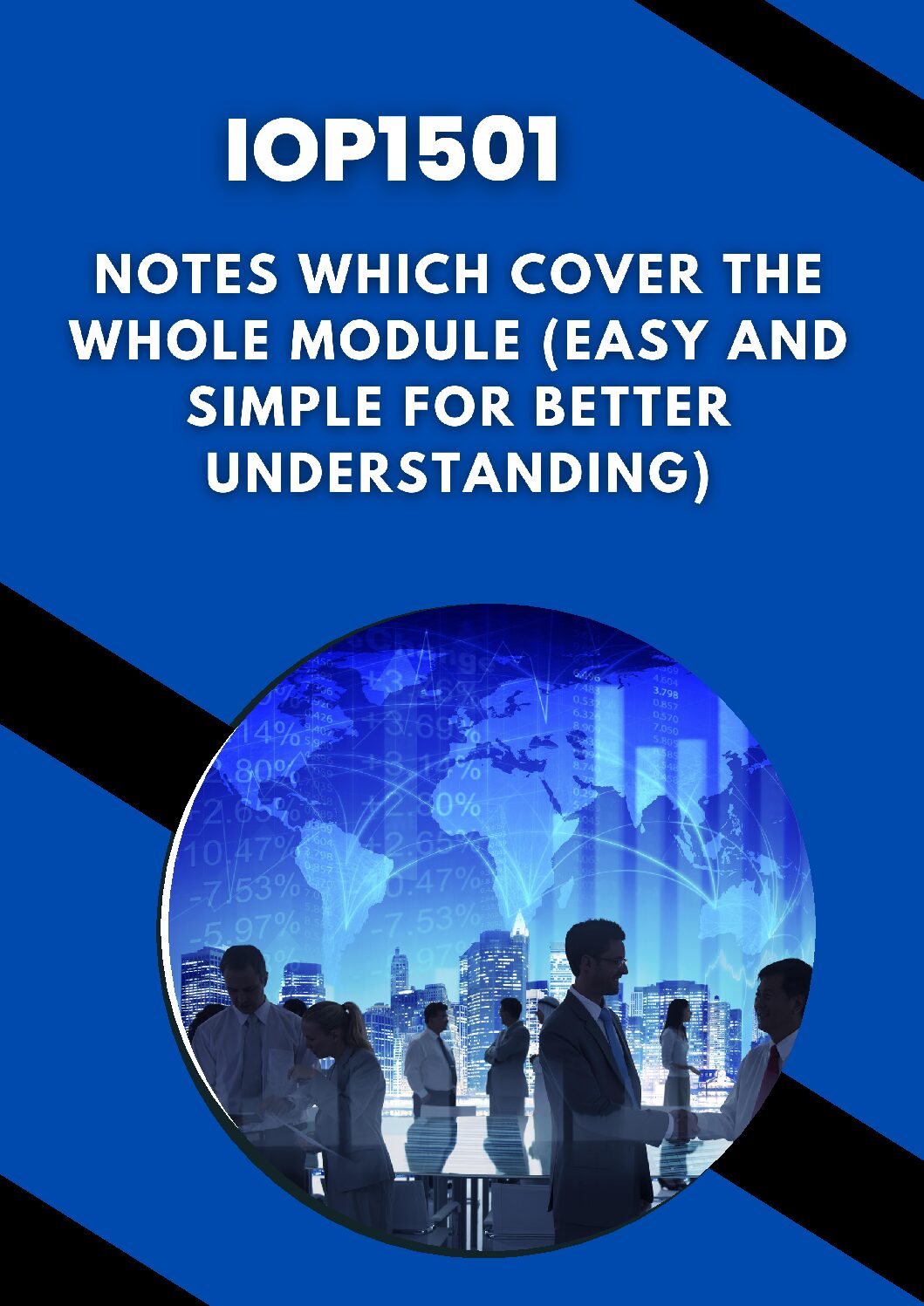


Reviews
There are no reviews yet.